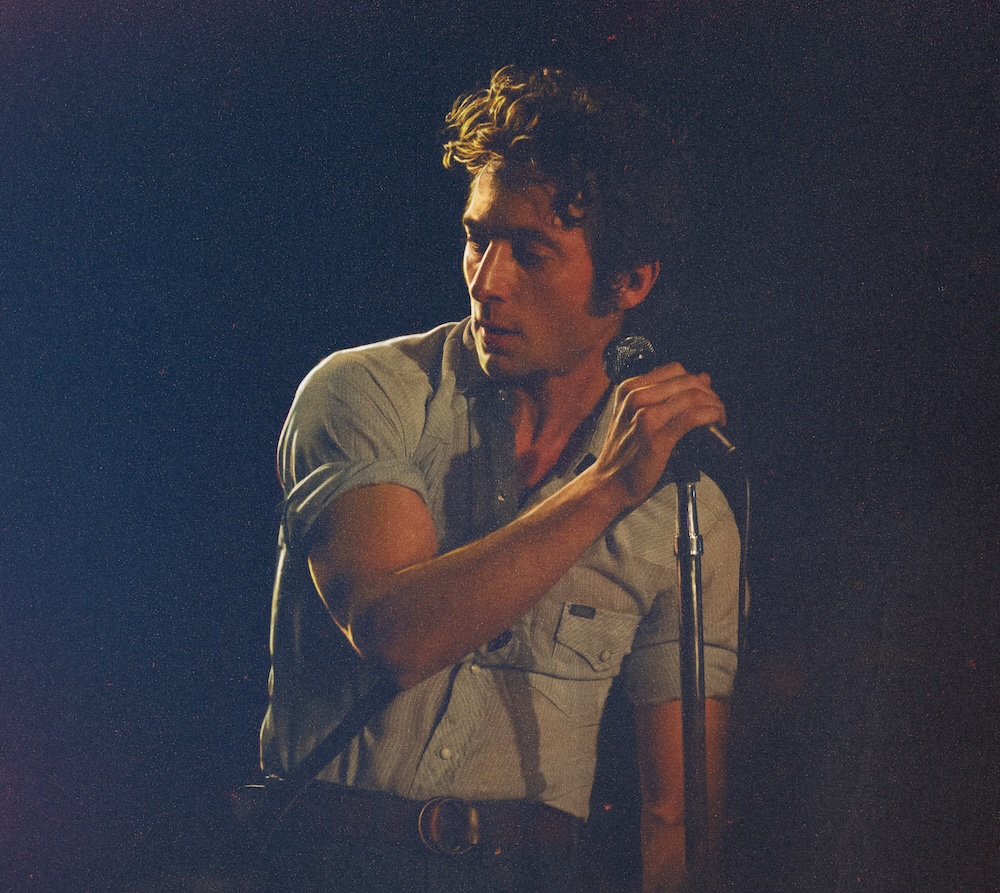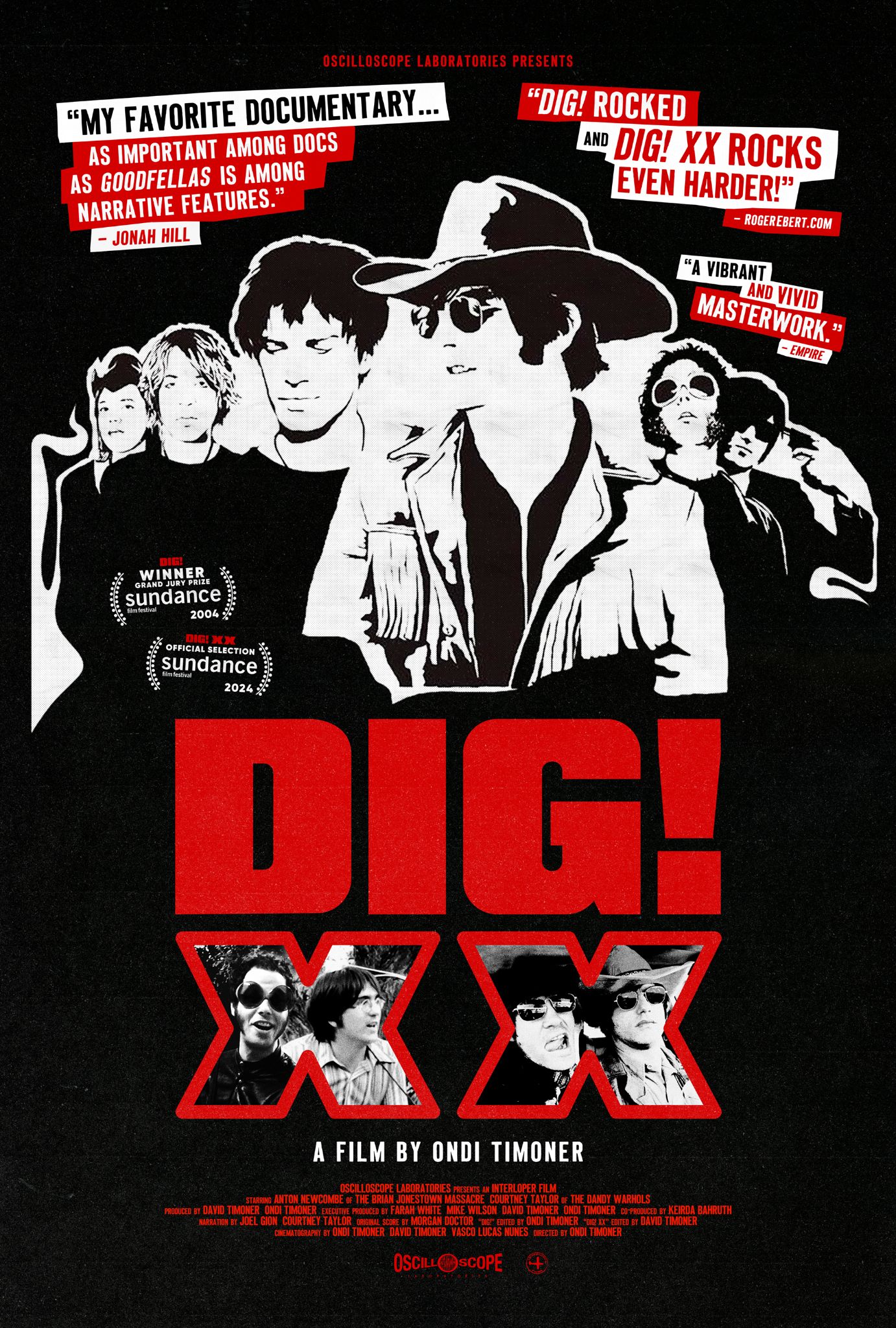Kurt Cobain: Montage Of Heck is a movie about the frontman of Nirvana, but it isn't about Nirvana. The word Bleach is never uttered. Dave Grohl was not interviewed, and his entry into the band is not addressed; he's just there all of a sudden as the archival footage shifts into the Nevermind era. Even the band's incalculable impact on modern music and pop culture only comes up in regard to its impact on Cobain. We don't need a movie to tell us the story of Nirvana's rise from obscure Washington indie-rock kids to reluctant rock 'n' roll saviors who changed the music industry forever; that story has been told over and over again, and its facts are readily available at your public library. Thanks to a quarter-century of intense media scrutiny, we already know a lot about Cobain's private story too: his troubled childhood, his debilitating stomach problems, his self-medication with heroin, his fear and rejection of the worldwide media spotlight, his (um) unconventional family life with wife Courtney Love and their daughter Frances Bean Cobain, and his suicide by gunshot at age 27. It's history, legend, scripture. But we've never had such a shockingly direct view into his world as the one director Brett Morgen pieced together from Cobain's own archives with the help of Frances Bean. Montage Of Heck is the definitive portrait of Cobain, and it will rattle you as much as Cobain rattled the world.
Montage Of Heck is named after a sound collage mixtape Cobain made in 1986, and it's constructed similarly. The film stitches together home movies from throughout his life, new interviews with his friends and family, behind-the-scenes looks at iconic Nirvana moments like MTV Unplugged and the "Smells Like Teen Spirit" and "Heart Shaped Box" videos, consistently thrilling concert footage, awkward TV interviews, animated audio recordings of Cobain, and page after page from his notebooks, also animated. Every component is fascinating in its own way, starting with the Super 8 footage from Cobain's childhood; apparently the rest of the country really is years behind New York and L.A. because the citizens of Aberdeen, Washington circa 1967 dressed quite a bit like the characters from Mad Men circa 1963. Seeing happy kiddo Cobain strumming away at his first toy guitar is the earliest of many jarring images Morgen serves up. (Not the first, though: The film opens with Cobain in drag pretending to drop dead on stage, and the lingering shot of him sprawled out and motionless is supremely haunting.)
The fresh interviews are powerful, too. Cobain's mom, dad, and stepmom are interviewed, as are Tracy Marander, Cobain's girlfriend during Nirvana's early years, and Love, Cobain's wife and the mother of his child. Krist Novoselic is the lone representative from Nirvana; notably, he's identified on the title card as "Kurt's friend" rather than "Kurt's bandmate." All of them lend valuable perspective, both from the content of their insights and their demeanor. The men seem nervous and exasperated when they talk about Cobain, whereas the women still have a nurturing tone. All of them are generous with information -- wide-open windows into his world. I don't know exactly who else Morgen interviewed, but the interviews he chose to include are there for a reason.
Less satisfying are the animated sequences. The device was necessary to depict Cobain's depressing stories about his first sexual encounter and his earliest suicide attempt, but watching cartoon Cobain gets tedious later on when Marander is describing his creative process and when we hear his performance on a local radio station. I enjoyed the notebook animations a lot more: There we see Cobain's violent doodles come to life, and we're privy to everything from band to-do lists to soul-baring journal entries. It's more than a little startling to watch the page fill up with repeated demands to "Kill yourself." Seeing the band ambling around the sets of its videos is fun, but not as fun as hearing Cobain's between-song banter from MTV Unplugged. And though I understand why Morgen waited until the closing credits to deploy the studio recording of "Smells Like Teen Spirit," I found the string-quartet version he paired with the "Teen Spirit" video shoot an oddly maudlin choice.
By far the most arresting moments are when Cobain himself is onscreen. The man was electric even when burying his face into his hands out of boredom. Any time he's on stage with Nirvana, it's an absolute rush, whether raging through "Breed" at some festival or passionately howling to the end of MTV Unplugged closer "Where Did You Sleep Last Night," a performance that never loses its ability to tingle my spine no matter how many times I hear it. And if you remember anything from this movie, it will be the home movies of Cobain and Love, first fucked up on heroin at their grotesquely filthy L.A. apartment then later with an infant Frances Bean. Words won't do these scenes justice; they are at once soul-crushing, hilarious, and insane. And one Cobain joke at the expense of a fellow Seattle grunge band is priceless.
All these elements are patched into a chronological story of Cobain's life. Band business swirls in the background most of the time, but the focus is squarely on Cobain the brilliant, damaged human being. Montage Of Heck is fixed so intensely on Cobain that the narrative ends with his suicide. We see no news reports about his death and no interviews reflecting on it. As if to mirror death itself, there is a sharp finality to it. Like Cobain's music, it is beautiful and powerful, and yet it feels incomplete; you still want more.
[videoembed size="full_width" alignment="center"][/videoembed]
Kurt Cobain: Montage Of Heck screens at select theaters beginning 4/10 and will air 5/4 on HBO.






